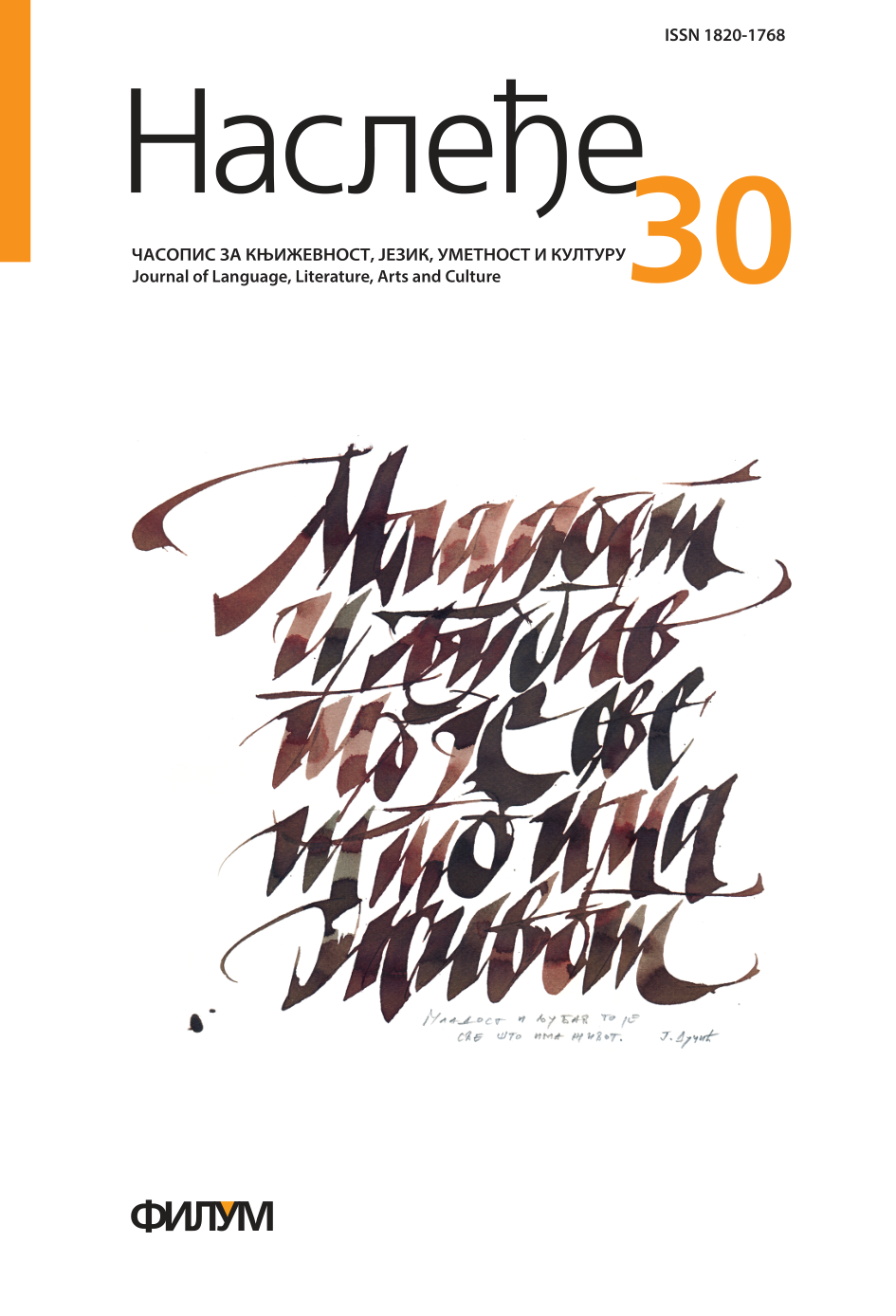GRAMMATICAL CHARACTERISTICS OF FREE INDIRECT SPEECH IN JANE AUSTEN’S NOVELS
Keywords:
free indirect speech, grammatical characteristics, grammatical realizationAbstract
The paper analyzes free indirect speech (FID) realizations in the novels written by Jane Austen (1775 – 1817): Sense and Sensibility (1811), Pride and Prejudice (1813), Mansfield Park (1814), Emma (1815), Northanger Abbey (1818), and Persuasion (1818). The analysis aims at comparing the grammatical characteristics of FID used by Austen with the model described in literature in order to prove that there is no reason for treating Austen’s FID as a less-developed form in comparison to the model found in contemporary literature. The analysis has shown that the differences between these two models are negligible in terms of their grammatical realizations.
References
Ostin 1948a: J. Austen, Emma. London: Allan Wingate.
Ostin 1948б: J. Austen, Sense and Sensibility. London: Allan Wingate.
Ostin 1964: J. Austen, Pride and Prejudice. London: OUP.
Ostin 1985: J. Austen, Pride and Prejudice, Mansfield Park, Persuasion. London: OUP.
Ostin 1994: J. Austen, Northanger Abbey. London: Penguin.
Baldik 2001: C. Baldick, The Concise Oxford Dictionary of Literary Terms. New York: OUP.
Bahtin 1980: M. Bahtin, Marksizam i filozofija jezika. Beograd: Nolit. Preveo sa ruskog Radovan Matijašević.
Vale 1993: E. Valle, Narratological and Pragmatic Aspects of the Translation into Finnish of Doris Lessing’s Four-Gated City, In: Y. Gambier and J. Tommola (eds.): Translation and Knowledge, SSOTT VI, 245–261.
Veters 1994: C. Vetters, Free Indirect Speech in French, In: Vet, Co and Vetters (eds.): Tense and Aspect in Discourse: Studies and Monographs, 75, 179–226.
Gan 2004: D. P. Gun, Free indirect Discourse and Narrative Authority in Ema, Narrative, 12/1, 35–54.
Karavesović 2010: D. Karavesović, Slobodni neupravni govor: englesko-srpske paralele, Nasleđe, VII, 15/1, 143–152.
Klitgard 2004: I. Klitgard, Dual Voice and Dual Style: Translating Free Indirect Discourse in Ulyssis, Nordic Journal of English Studies, 3/3, 319–345.
Kovačević 2012: M. Kovačević, O gramatičko-stilističkom terminosistemu tuđeg govora, Srpski jezik, Beograd, XVII, 13–38.
Kon 1978: D. Cohn, Transparent Minds: Narrative Modes of Presenting Consciuosness in Fiction. Princeton: PUP.
Lips 1926: М. Lips, Le Style Indirect Libre. Paris: Payot.
Maier 2012: E. Maier, Quotation and Unquotation in Free Indirect Discourse, Ms 2012, Groningen. http://dl.dropboxusercontent.com/u/109312/pub/emar-maier-2012-freeindirect-discourse-draft.pdf. 08. 06. 2013.
Mihelson 1990: P. H. Michaelson, Reading Pride and Prejudice, Eighteenth-Century Fiction, 3/1, 65–76.
Mulan 2006: J. Mullan, How Novels Work?. Oxford: OUP.
Popović 2007: T. Popović, Rečnik književnih termina. Beograd: Logos Art.
Prins 2003: G. Prince, A Dictionary of Narratology. Lincoln: University of Nebraska Press.
Rajić 1996: J. Rajić, Slobodni indirektni govor u španskom i mogućnost njegovog prevođenja na srpski, Južnoslovenski filolog, 52, 175–191.
Taivalkoski Šilov 1999: K. Tavalkoski – Shilov, When Two Become One: Reported Discourse Viewed through a Translatologica Perspective. http://www2.arts.kuleuven.be/info/bestanden-div/Kristiina%20TAIVALKOSKI-SHILOV,%20When%20Two%20Become%20One.pdf. 08. 06. 2013.






